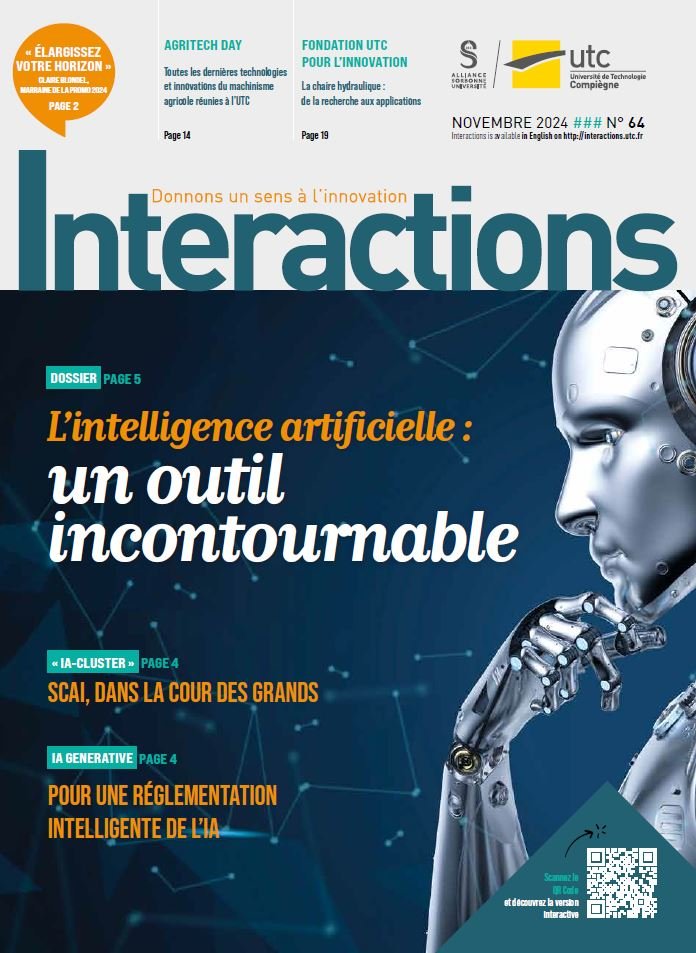56: In favour of a sustainable world of sound

Since the discovery of fire, noise has always been associated with human activity. The industrial revolution, with the development of transport and industry in particular, led to an unprecedented increase in noise pollution. The scale of noise pollution grew throughout the 20th century with the exponential increase in the number of cars and road transport, air and sea traffic and industry. These nuisances, which were tolerated as the price to pay for development, have gradually become intolerable. Their impact on our health but also on the surrounding fauna has led the public authorities to issue more stringent standards and industry to adapt. However, not all sound is noise. There are pleasant sounds, the song of a nightingale for example, and others that are unpleasant, such as the croaking of a crow or the noise of a pneumatic drill. UTC’s Acoustics and Vibration team works in this context to reduce unwanted noise as much as possible and make every day sounds more pleasant, particularly in the automotive and aeronautical sectors. But the team’s skills can also be used to protect the environment, for example to detect the stridulations of the chafer larvae that threaten the forest of Compiègne. In short, the team is helping to create a sustainable sound universe.

Jean-Daniel Chazot is a lecturer qualified to direct research and is in charge of the Acoustics and Vibrations for Engineers (UTC-AVI) programme within the mechanical engineering department.
Not all sound is noise. Sounds and even vibrations are part of the natural human environment. But ‘noise’ has taken on a particular significance with the growth of human activity.
«Engineers are not only trying to limit these noises but also try to improve the sounds made by everyday objects. In practice, they even try to adapt the sound to the user. Acoustics is thus a major marketing argument in all sectors. Moreover, reducing vibrations also makes it possible to increase the lifespan of equipment for more sustainable development,» he says.
However, the role of the vibro-acoustic engineer is changing. Why? «The evolution and tightening of regulations linked to noise pollution in order to protect the consumer, but also the environment, following an awareness of the effects of noise pollution. The WHO estimates that noise pollution is the second main cause of morbidity – 12 000 premature deaths in Europe — after air pollution. The health and environmental issues of noise pollution Jean-Daniel Chazot is a lecturer qualified to direct research and is in charge of the Acoustics and Vibrations for Engineers (UTC-AVI) programme within the mechanical engineering department. We can also cite a study by Bruitparif which concludes that people in the Paris region lose 10 months of their healthy life due to noise pollution, which causes stress, hypertension, sleep disorders and cardiovascular problems,» emphasizes Jean- Daniel Chazot.
Reducing these nuisances is therefore a major health issue for human beings but also for ecosystems. «For example, an American study shows that human activity doubles the background noise in 63% of natural areas that are supposed to be protected. Nuisances that affect the health of animals, disturb their communications and cause them to move away from their territory. Another example is the harmful effects of shipping, which doubles its noise level every ten years, on underwater life,» he adds.
A reduction that is therefore a major challenge for vibro-acoustic engineers. «At UTC, we give our students a solid theoretical and practical training so that they can measure, model, understand and treat vibrations and associated acoustic emissions. With these different skills, they can reduce nuisances at source and treat structures to reduce their acoustic radiation,» he explains.
These problems also give rise to research, very often carried out with industrial partners but also with public funding from the French government, the Hauts-de-France region and Europe.
«For example, a thesis is underway, with the Regional Centre for Innovation and Technology Transfer (CRITT), on the experimental characterization of turbine generated noise,» he explains.
Other projects in progress? «We are currently working with Saint-Gobain, as part of a thesis on the vibroacoustic modelling of a windscreen. Another is underway with Safran. The aim? To understand and reduce the unpleasant noise of electric motors,» concludes Jean-Daniel Chazot.
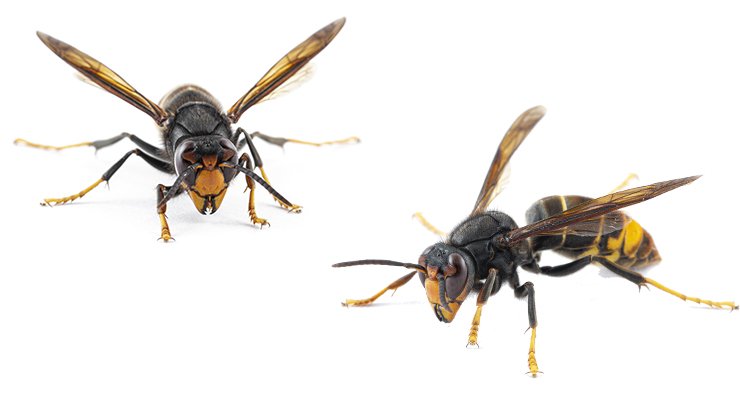
Jean-Daniel Chazot details the nuisances associated with the Asian hornet, a species on the list of invasive alien species in Europe. A ministerial thesis is devoted to what has become a research topic.
This species poses both health and environmental problems. «Hornets are dangerous for humans; they are also dangerous for bees. This causes damage to beekeepers but also to the environment, as bees play a major role in pollination,» he explains.
What can be done to limit the nuisance, especially since nests can often only be detected in autumn when the trees lose their foliage? Jean-Daniel Chazot then had the idea of contacting Pedro Castillo from UTC-Heudiasyc, who works on drones. «For us, we are thinking about a drone system equipped with an acoustic antenna that would make it possible to follow a hornet equipped with a small sound beacon in order to locate the nests without waiting for autumn,» he says.
What was supposed to be a student project eventually took a different course. «We responded to calls for projects that allowed us to benefit from a ministerial thesis on this research subject, which involves, in addition to Roberval and Heudiasyc of the UTC, the Jean-le-Rond‑d’Alembert Institute of Sorbonne University, «emphasizes Jean-Daniel Chazot.
A subject that requires specific skills. «At the UTC, our skills relate to drones and acoustic imaging. As for the Institut d’Alembert, it brings its expertise in MEMS sensors. What we plan to do is to attach a MEMS speaker to a hornet and follow it with a MEMS microphone antenna on the drone. These are very light miniaturised sensors that can be installed in numbers but with a reasonable additional mass. However, before we can do this, we will have to remove certain scientific and technological barriers, such as the difficulty of tracking a moving acoustic target,» he concludes.
Dectection of chafers’ larvae that have infested the forest
After two years of preparatory classes in Arras, Camille Leblanc was admitted to UTC in the 3rd year of mechanical engineering and continues his studies in the Mechatronics, Actuators, Robotics and Systems (MARS) programme. He will start a thesis in embedded acoustic imaging at Roberval as of autumn 2021.
It was following a CC on “Sound signal processing” with Solène Moreau, a UV that I really enjoyed’, he says, that he discovered a passion for the subject.
Lacking credits in his 4th year, he was able to bounce back by opting for a project to be carried out between the two semesters in order to make up for the lack of CCs. This was a good opportunity because, at the same time, Jean-Daniel Chazot proposed an inter-semester project on the study of the signal emitted by beetle larvae threatening the forest of Compiègne but also elsewhere in Europe. «Three students applied and all three were selected, as the work to be done was substantial,» he explains.
The project itself? «We took up the work of Ms Görres, a German research scientist, who used a fractal method to detect the presence of larvae and, above all, to quantify it. We therefore used her script as a starting point and then improved it by testing it on real cockchafer chirps,» concludes Camille Leblanc.
Stéphane Brault is a research assistant at the ONF (French National Forestry Commission), where he monitors the forests of Compiègne and Laigue. Specialist of entomology questions, he has his sights set on the chafer larvae that infest twothirds of the forest surface, albeit with varying densities.
These larvae devour the roots over a period of 4 years, preventing natural regeneration and planting. The idea behind the collaboration with UTC? «In entomology, some species can only be determined by acoustics. However, while searching the scientific literature, I realized that very successful scientific research had been carried out on chafer infestations in sugarcane fields in certain countries of the Indian Ocean. At the ONF, we thought that this was an avenue to explore with the UTC,’ he explains.
Jean-Daniel Chazot, head of the AVI course, seized the opportunity to set up an intersemester project on the study of the signal emitted by the larvae. It was too short a project for such a complex subject. «It should be noted that four years pass between the laying of the eggs and the initial flight of the chafer. Long-term studies would therefore be necessary as part of a thesis, for example,» he stresses.
Especially as there are many obstacles to overcome. «One of the main ones is not having a tool for monitoring the insect, i.e., we are unable to say how many there are. Today, the only way we have is to make holes in the ground. However, populations can vary from 1 to 10 from one hole to another that is one metre apart,» concludes Stéphane Brault.
After two years of preparatory classes in Arras, Camille Leblanc was admitted to UTC in the 3rd year of mechanical engineering and continues his studies in the Mechatronics, Actuators, Robotics and Systems (MARS) programme. He will start a thesis in embedded acoustic imaging at Roberval in the fall of 2021.
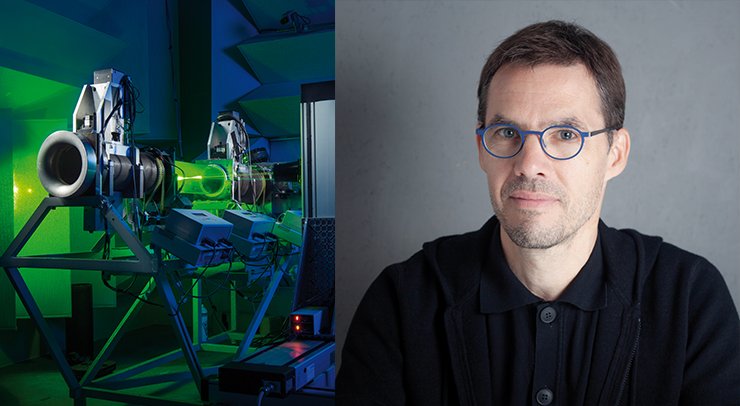
Professor at UTC since 2012, Nicolas Dauchez is a member of the Acoustics and Vibration team within the Roberval laboratory. He is specialized in the reduction of noise pollution by means of so-called «passive» methods.
What does it mean in practice? «Depending on the context, we try to reduce nuisance by using absorbent materials that have the property of being porous, such as foams or fibrous materials. In the automotive industry, for example, this involves lining the roof, the floor, the door linings, the dashboard and also everything around the engine block with the appropriate material. In the case of aeronautics, it is a question of using a lining with a dual function: a thermal and acoustic insulation role,» he explains.
The tightening of noise standards is having an impact on a large number of sectors. This has led to a boom in vibro-acoustics, the study of vibrations that generate sound. «We are interested in the vibrations of structures. In the automotive industry, for example, the vibrations of a car body are generated by various sources. In particular, there are aerodynamic vibrations, road vibrations and engine vibrations that can produce sound both inside and outside the vehicle. We will therefore model various situations and try to find ways of limiting the nuisance, using suitable materials, etc.,» explains Nicolas Dauchez. To do this, the vibroacousticians use two approaches, one dedicated to digital simulation, the other experimental.
What is the role of digital simulation? «We will develop models to explain the observed phenomena. In fact, in our approach, we try to compare measurements with calculations. If the results are conclusive, we deduce that the model is correct and we will use it to optimize a number of solutions and verify their validity experimentally,» he stresses.
Experimental tools? «The lab is equipped with a large amount of measuring equipment, such as an anechoic chamber, i.e., one that does not cause an echo, in which we can carry out measurements without any noise pollution or acoustic resonance. We also have the opposite. In other words, a reverberation chamber with opposite properties but useful for measuring power or sound insulation. Several acoustic ducts allow us to study silencers and a laser vibrometer allows us to measure structural vibrations without contact. Finally, a laboratory is dedicated to the characterization of acoustic materials,» he explains.
This know-how, combined with a growing need to track down noise pollution in a number of sectors, has led to several partnerships with the industrial world.
The proof? Numerous projects such as Ecobex, with Renault, Saint-Gobain, Vibratec and ESI Group, a company specializing in digital simulation in vibro-acoustics, or Sempae, with Renault, ESI Group and Trèves.
Ecobex’s objective, for example? «In Europe, the method of calculating noise has been modified to be more in line with city driving, which includes acceleration episodes, episodes at constant speed, etc. Stricter standards have been introduced with the aim of ensuring that the noise level of internal combustion vehicles does not exceed that of electric vehicles by 2024. The three sources of car noise are exhaust noise, engine noise and tire contact with the road. The idea was to simulate “passing” noise and to develop innovative acoustic screens by modelling the properties of porous materials, foams or fibres, subjected to the thermos-compression process,» explains Nicolas Dauchez. This project has resulted in the publication of three scientific articles.
A problem that continues with the Sempae project launched in 2020. «This time, the idea is to place the acoustic screens — either insulating or absorbing — directly in contact with the engine to gain in mass. This generates additional constraints, for example the behaviour of the material in relation to the temperature or vibrations of the engine,» he concludes.
Two development prospects for this theme are currently emerging: on one hand, the use of metamaterials structured in such a way as to surpass their original properties, thanks to resonances or their periodicity; on the other, beyond the reduction of noise nuisance, taking into account the user’s sound experience, a step towards sound design.
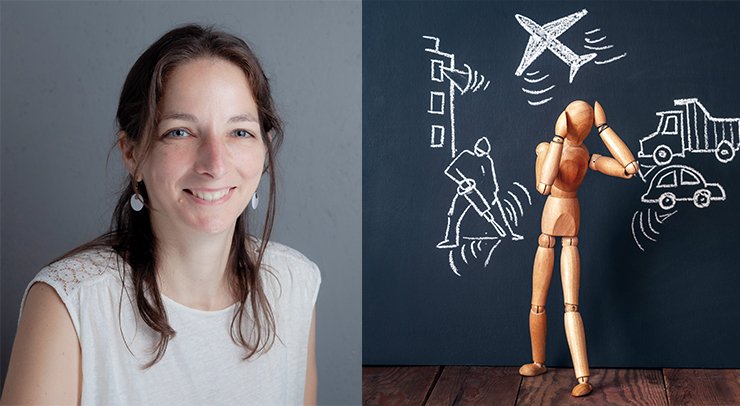
Solène Moreau, who has been a lecturer at the UTC since 2011, is a specialist in measurement techniques in acoustics in the presence of flow, in particular in the aeronautical and automotive sectors. She works, in particular, on silencers made of noise-absorbing materials.
What is the underlying idea? «The idea is to develop new measurement techniques to characterize the propagation of noise with airflow and to study new silencers or aerodynamic phenomena that generate noise. Phenomena that combine acoustics and flow. We know that the predominant sources of noise in aircraft, for example, are engine noise, which can be reduced by silencers, and aerodynamic noise, she explains.
Reducing these noises is a major health issue, especially since the WHO was forced in 2018 to tighten its thresholds for airborne noise, which is considered to be the most harmful to health.
This has stimulated a great deal of research. A thesis has thus enabled the development of a measurement technique for validating acoustic impedance models of silencer/mufflers units.
In concrete terms? «The acoustic impedance of a material is what determines its behaviour. In other words, its capacity to absorb sound. The numerical impedance models developed in the literature have been validated experimentally on our aero-acoustic bench, which can go up to a Mach number of 0.25, i.e., an air flow speed of about 300 km/h, for classic units or Single Degree of Freedom Systems (SDOF). These are micro-perforated metal plates with a honeycomb structure underneath, which is supported by a rigid base. This configuration absorbs noise like that of an aircraft turbojet engine. Engine noises, in short, that are heard mainly during take-off and landing,» she explains.
However, in planes, for example, it’s not only the engines that generate noise. We also have aerodynamic noise. In other words, the noise generated by an airflow on contact with an obstacle. In this case, it’s aircraft wings. «A thesis devoted to this problem is currently underway, with two lines of research : Firstly, to develop a laser measurement technique for airflow acoustics, and secondly to study the noise generated by a flow on an aircraft wing profile. This is generally the noise that is heard when aircraft are high in the sky. At present, we know how to describe the noise generated, but we know less about the generation mechanisms. This is what we are going to try to understand,» concludes Solène Moreau.
Characterization of porous acoustic materials
Alexandre Wilkinson did all his studies at UTC. A graduate of the mechanical engineering department (UTC-IM), majoring in Acoustics and Vibrations, he started a doctorate in the UTCRoberval laboratory in October 2020 after his end-of-studies engineering internship at Renault.
The subject of his thesis? «The objective of this thesis is to characterize porous engine encapsulation materials, such as foams or fibrous materials. This thesis is part of SEMPAE, an industrial project that includes, in addition to the UTC, Renault, the equipment manufacturer Trèves and ESI Group, which specializes in digital simulation,» he explains.
A project dedicated to tracking down noise pollution, particularly in motor vehicles. «The aim of the project is to develop software to simulate the behaviour of porous materials encapsulating a car engine and to calculate the noise radiated or, conversely, attenuated by the use of a particular material. My role in the project is to characterize these different porous materials, find the models adapted to their use and, ultimately, model their behaviour in this software,» he explains.
These materials are not easy to simulate and will be modelled in stages. «I started by comparing the measurements with simulations using the simplest methods, mainly transfer matrices where we assume that we have an infinite plane of foam. Then we will move on to the finite element method, which consists of discretizing a space that may have a more complex geometry, and calculating a quantity at each point (or node) created,» concludes Alexandre Wilkinson.
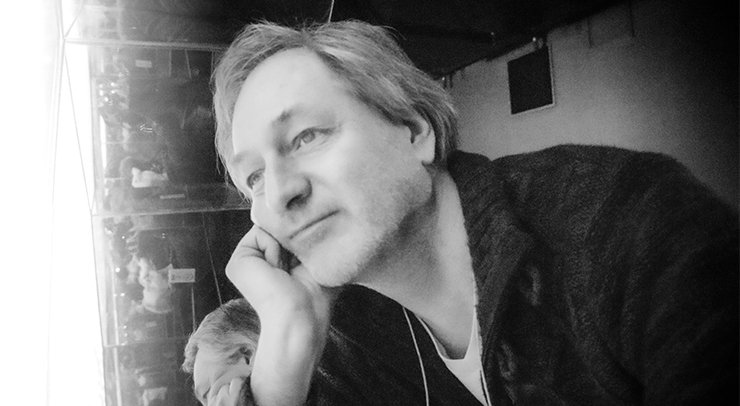
As a specialist in sound design, Christoph Harbonnier lectures in the UTC Design Department within the Mechanical Engineering department (UTC-IM). For the past fifteen years, he has been managing the Audionaute studio, founded by the contemporary music composer Michel Redolfi.
As a designer and a musician, it is quite natural that Christoph Harbonnier became interested in all aspects of sound. «For me, it is a question of thinking about the timbre of sounds according to the context. Within the framework of the Audionaute studio, for example, we have carried out sound design operations in public transport, in particular in the tramways of cities such as Brest, Besancon and Nice,» he explains.
His approach to sound design? «The most important thing is to «revisit» the comfort of users, particularly in the sound content. We study the history, culture and architecture of the city closely in order to personalize the sound atmosphere chosen for each operation as best we can. It’s an exciting but complex job, where we try to create a specific look for each station, but also to adapt the sound of the messages, for example, depending on whether it’s during the day, generally noisier, or in the evening, when it’s a question of calming the passengers. A sound package that must ‘speak’ to users by combining function, comfort and pleasure,» he says.
This approach sometimes leads them to intervene upstream in the choice of audio equipment, for example.» The basic equipment of trams, whether they are made by Bombardier, Alstom or the Spanish company CAF, is catastrophic in terms of acoustics and deemed “unworthy” of the comfort of users. We have therefore systematically replaced the basic loudspeakers with a system of small loudspeakers that we developed with Audax, a French loudspeaker manufacturer,» stresses Christoph Harbonnier.
This know-how is of interest to all the big names in the sector in France: Keolis, Véolia and Transdev. He also tries to pass on this know-how to students as part of the UTC Acoustic Design course. This is a first for a university of technology. «It’s a joint course for AVI and IDI students that links the acoustics and industrial vibrations department, which uses measurement tools to analyse the physical characteristics of sound, and the design department, where we design, imagine and create sounds,» he concludes.
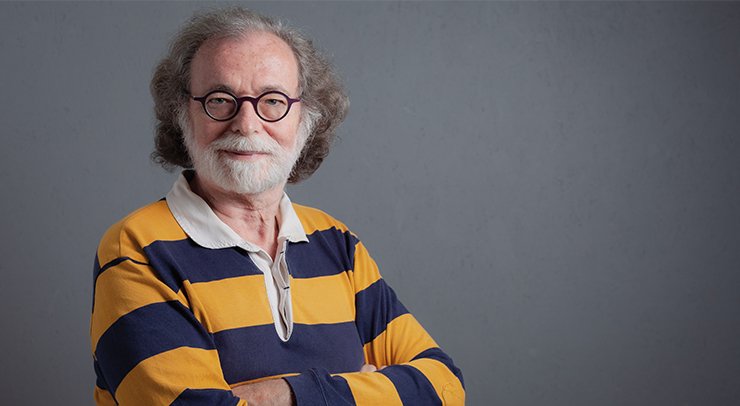
Pierre-Henri Dejean, an architect, urban planner and ergonomist, joined the UTC in 1984. He is responsible for the Industrial Design Engineering (IDI) programme.
His first feeling about sounds? «At the time, I could say that my ‘encounter’ with sound was negative because, as an architect as well as an ergonomist, sound, in the industrial sector, is associated with noise — machine noise, for example. Since then, industry has moved on, driven by standards and regulations,» he says.
However, by working in the product area, he changes the way he looks at noise to sound. «I had indeed already evolved a lot by moving from the world of working conditions in industry to the product field. When I arrived at UTC, I integrated the ‘design’ course and I naturally tried to interest the Acoustics and Vibration course in the problematic of the product, a field that requires thinking about the user,» he underlines.
How can we move from noise to sound when we know the health and environmental nuisances caused by the former and the operational interest of the latter? «I would say that sound is inherent to human activity. Wasn’t the first designer the one who created the first flint-stone tool? The sounds in our environment constitute a very strong information system. A stormy sea, for example, does not emit the same sounds as a calm sea,» he maintains.
The role of acousticians for the ergonomist and/ or sound designer? «With acousticians and in particular their measuring devices and recording systems, we will try as ergonomists and then as designers to distinguish useful sounds from those that are useless,» explains Pierre-Henri Dejean. In concrete terms? «We’re going to eliminate non-useful sounds, which are considered to be noise, for two reasons. The first is that they serve no purpose and the second is that they can interfere with really useful sounds. Then we isolate the useful sounds and try to see what the human being retains, whether he is aware of it, etc. We talk about acoustic intelligence, which, in the case of the human being, is the most important thing. We talk about acoustic intelligence, which is often a reflex. If you close a door, for example, you know, just by the sound it makes, whether it is closed or not. In a car, for example, we know from the sound alone that something is wrong with the engine. Finally, the designer’s objective is to go further: to arrive at the pleasure sound configured to be both useful and pleasant,» he concludes.


